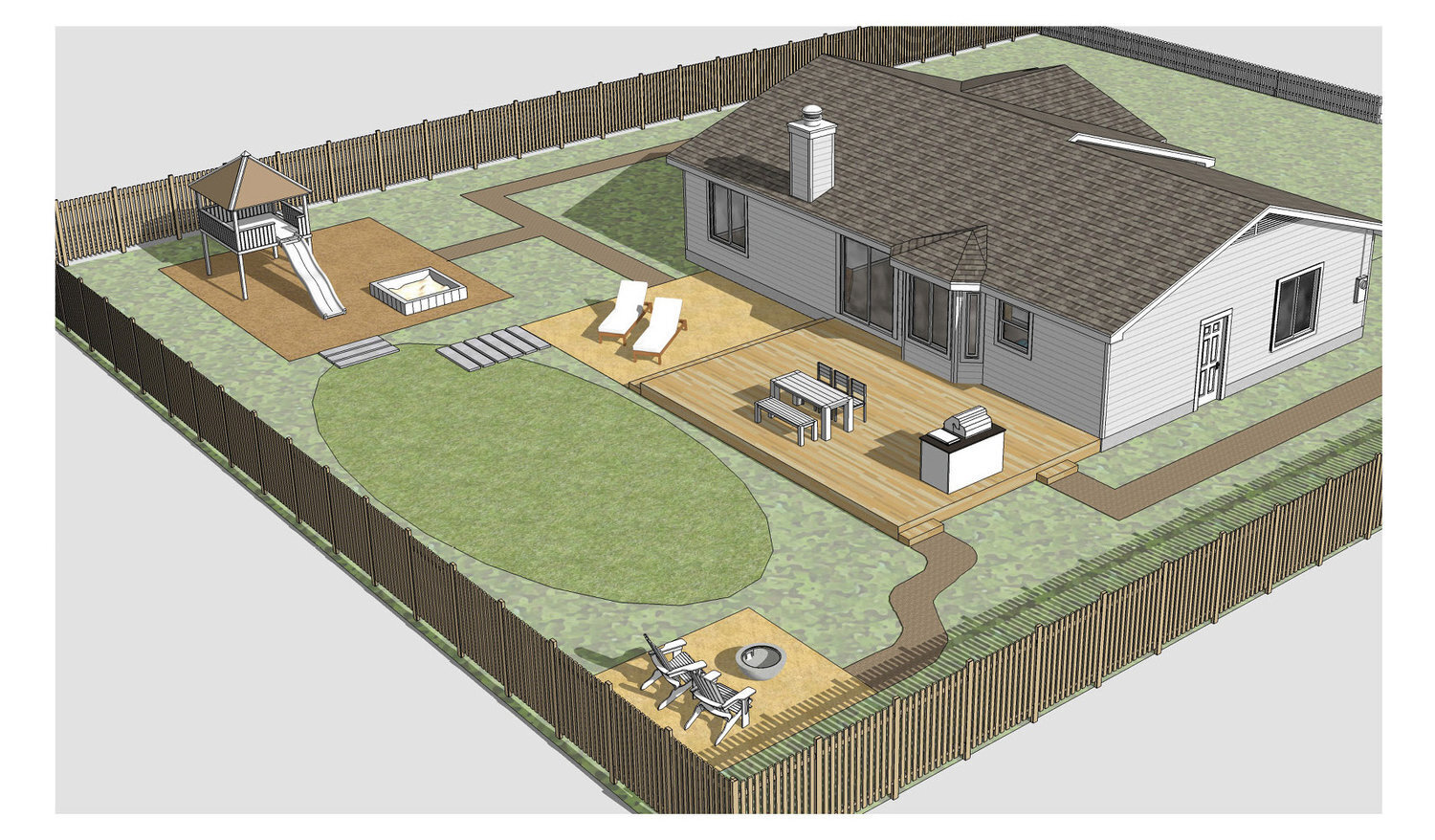Thinking like a Landscape Designer
Professional landscape designers share their best advice for imagining new outdoor spaces, from understanding the components of a landscape to visualizing potential changes.
Pro Tip 1: Start with a Clean Slate
Whether your current yard is more of a lush garden or a barren plot, note which areas and features you’d like to protect (that mature oak tree, or carefully tended flower garden) and which areas could use improvement. You’re creating the opportunity for something even better will take its place, so don’t be afraid to clear what’s there.
Start clearing the spots that seem to detract from your property’s overall look and feel. Looking at a clean slate before getting to the details of planting will bring clarity and simplicity to the whole process.
Pro Tip 2: Think in 2D
Spending a bit of time strategizing what plants make sense where will save headaches and costs down the road. Start by thinking of your property from above (a plan view). Landscape architects and designers work from a plan view to layout features of outdoor space.
A sample backyard would look something like this in three dimensions:
Pro Tip 3: Think in Planes
Thinking of plan shapes in three dimensions will help ensure that spaces are properly scaled for their uses. As in your house, outdoor spaces have ground, vertical, and overhead surfaces.
Ground Surfaces
The hardscape and softscape areas you’ve already drawn on your plan are your ground surface and the foundation for your landscape design.
Vertical Surfaces
These may include building walls, fences, a screen or trellis, or tall shrubs and hedges. Provide privacy and separate spaces within your yard.
Overhead Surfaces
The ceiling of your outdoor spaces will include canopies of trees and large shrubs, umbrellas and awnings, pergola or trellis tops, or simply the sky. Be sure to leave plenty of clearance for people and structures underneath.
Pro Tip 4: Create Focal Points
Visual connections are important across a landscape. A sculptural tree, stunning plants, comfy furniture, an atmospheric fountain, or a favorite sculpture seen from entries and windows will draw the eye out into the landscape.
Nice views from bedrooms, living and dining spaces, and the kitchen sink will bring year-round joy, so consider what you’ll see from these spots.
Experiment with focal points for great views inside and out. Special features — a sculpture, fountain, or trellis, perhaps — can enliven a space.
Pro Tip 5: Create Cohesion
Strive for creating cohesion. Be sure you have variations in sizes, shapes, and textures to give variety to your yard. Then, you can repeat colors, materials, and plant species across your property to tie everything together.
Questions? We’re here to help. Reach out at hello@yardkit.com to let us know how it’s going.







